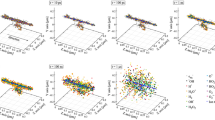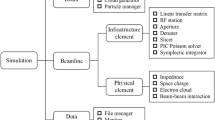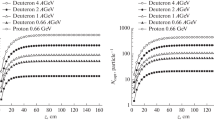Abstract
The last few years have seen a rise in the number of particle accelerators built in Korea. However, there has been relatively little focus on accelerator-based study of secondary particles (such as rare-isotope beams) in the context of nuclear physics, biophysics, and dark matter research. In this context, we compare our simulation results with experimental data on various heavy-ion beams. We determine the optimized simulation toolkit and its parameters for these experiments. Since the Geant4 is more accurate than any other simulation packages, we use the Geant4 toolkit in the study. We also provide the relevant references for various issues arising in our study. We simulate the interaction of particles with target material and study the characteristics of heavy-ion beams. With regard to study design, first, we examine the validity of the Geant4 model. Next, we examine the various physics models built in the Geant4 to determine the most optimized model that describes the expected physical phenomena. Finally, we execute the Geant4 simulations to determine the characteristics of secondary heavy-ion beams. We plan to use these results for rare isotope accelerator complex for on-line experiment (RAON), which is an upcoming facility for heavy-ion collision experiments in Korea.

















Similar content being viewed by others
References
O. Kofoed-Hansen, K.O. Nielsen, Mat. Fys. Medd. Dan. Vid. Selsk. 26, 1 (1951)
B.H. Kang et al., J. Korean Phys. Soc. 63(7), 1473 (2013)
D. Jeon, I.S. Hong, H.J. Kim, J.W. Kim et al., J. Korean Phys. Soc. 65(7), 1010–1019 (2014)
J. W. Sin, et al., Preprint arXiv:1402.1847v2 [Physics.ins-det] (2014).
J.W. Sin et al., Nucl. Instrum. Meth. B 349, 221 (2015)
K. Cho, J. Astron. Space Sci. 33, 63 (2016)
S. Agostinelli et al., Nucl. Instr. Meth. Phys. Res. A 506, 250 (2003)
J. Allison et al., IEEE Trans. Nucl. Sci. 53, 270 (2006)
J. Allison et al., Nucl. Instrum. Meth. A 835, 186 (2016)
See Geant4 toolkit. http://geant4.cern.ch/
K.A. Olive et al., Particle Data Group. Chin. Phys. C 38, 090001 (2014)
V.N. Panteleev et al., Eur. Phys. J. Spec. Topics 150, 297 (2007)
M. Bernas et al., Nucl. Phys. A 725, 213 (2003)
J. Taieb et al., Nucl. Phys. A 724, 413 (2003)
Acknowledgements
We thank Chanyoung Lee for their assistance with this analysis. This research was supported by the National Research Foundation of Korea (NRF) grant fund by the Korean government (MSIT) (No. 2021R1F1A1064008). This research is also supported by the National Supercomputing Center with supercomputing resources including technical support (KSC-2022-CHA-0003).
Author information
Authors and Affiliations
Corresponding author
Additional information
Publisher's Note
Springer Nature remains neutral with regard to jurisdictional claims in published maps and institutional affiliations.
Rights and permissions
Springer Nature or its licensor (e.g. a society or other partner) holds exclusive rights to this article under a publishing agreement with the author(s) or other rightsholder(s); author self-archiving of the accepted manuscript version of this article is solely governed by the terms of such publishing agreement and applicable law.
About this article
Cite this article
Kim, K., Cho, K. A study on heavy-ion beam simulation using Geant4. J. Korean Phys. Soc. 83, 605–613 (2023). https://doi.org/10.1007/s40042-023-00833-7
Received:
Revised:
Accepted:
Published:
Issue Date:
DOI: https://doi.org/10.1007/s40042-023-00833-7




